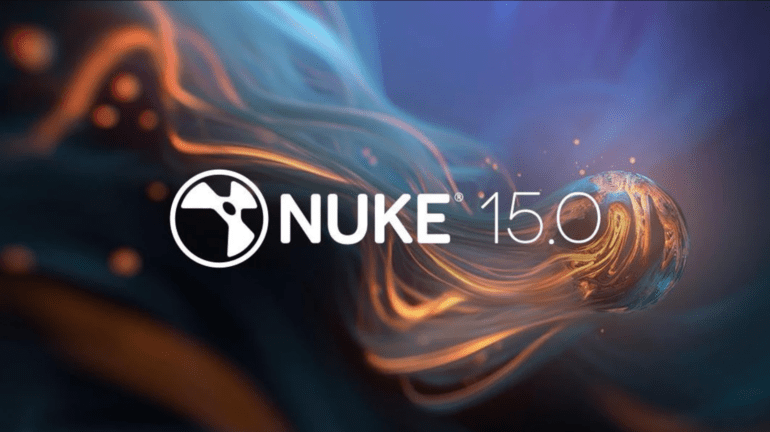TL;DR:
- Foundry introduces major updates for Nuke, Katana, and Mari.
- Nuke 15.0 promises up to 20% faster processing speeds with Apple silicon support.
- CopyCat machine learning tool in Nuke now offers 2x faster training and distributed training options.
- Katana 7.0 aligns with Nuke’s 3D system, enhancing flexibility and live rendering performance.
- Mari 7.0 streamlines workflows with baking tools, enhanced texturing, auto-project backups, and licensing improvements.
Main AI News:
Foundry, a stalwart in the realm of creative software development, has unveiled substantial enhancements across its product portfolio, including Nuke, Katana, and Mari. With a resolute focus on elevating productivity and streamlining processes, these updates are poised to supercharge processing speeds by a remarkable 20%, while Nuke’s CopyCat machine learning tool is set to witness a twofold increase in training speeds. Additionally, Mari receives a gamut of new baking tools to simplify geometry-based maps, and Katana fortifies its application-switching capabilities for seamless operation.
For an in-depth exploration of what lies ahead for the Nuke family of compositing and review tools, let’s delve deeper into the offerings of Nuke 15.0.
Nuke 15.0 Updates: Paving the Way for Speed and Efficiency
Nuke 15.0 emerges as a beacon of swiftness and efficiency. With native Apple silicon support, this iteration promises a remarkable 20% boost in general processing speeds across a spectrum of tools. Notably, the CopyCat machine learning training tool undergoes a substantial upgrade alongside enhancements for the USD-based 3D system and multi-pixel blink effects.
Here’s an overview of what Nuke 15.0 brings to the table:
- Native Apple Silicon Support: Expect up to 20% faster general processing speeds and GPU-enabled ML tools, including CopyCat, in Nuke 15.0.
- Faster CopyCat Training: Leveraging new distributed training, users can distribute the workload across multiple machines using standard render farm applications. Additionally, image resolution compression reduces file sizes, enabling up to 2x faster training.
- USD-based 3D System Improvements (Beta): This includes an entirely revamped viewer selection experience with a dedicated 3D toolbar, two-tier selections, an updated GeoMerge node, ScanlineRender2 improvements, a new Scene Graph pop-up in the mask knob, and USD updated to version 23.05.
- Multi-pixel Blink Effects in the Timeline: Exclusive to Nuke Studio and Hiero, this feature allows the application and viewing of Blink effects like LensDistortion and Denoise at the timeline level, eliminating the need to toggle between timeline and comp environments.
- OCIO Version 2.2: This update introduces support for OCIOZ configs directly within a Nuke 15.0 project.
Katana 7.0 Updates: Enhancing Flexibility and Performance
Parallel to the Nuke updates, Katana 7.0 is poised for imminent release, boasting new tools and features that include USD scene manipulation, multi-threaded live rendering, and optimized Geolib3-MT runtime. These enhancements, rooted in the same architecture as Nuke’s new 3D system, align perfectly with Foresight+ while ensuring minimized memory usage and downtime.
Here’s what’s new in Katana 7.0:
- USD Scene Manipulation: Drawing from the same architectural foundation as Nuke’s 3D system, users gain access to the flexibility of USD 23.05 within their pipeline.
- Multi-threaded Live Rendering: With multi-threaded Live Rendering now compatible with Foresight+, artists experience improved performance and a smoother user interface.
- Optimized Geolib3-MT Runtime: Equipped with fresh caching strategies, this feature mitigates memory bloats and keeps downtime at bay, ensuring that renders seamlessly fit into the production pipeline.
Mari 7.0 Updates: A Streamlined Workflow Ecosystem
As part of this software evolution, Mari receives a multitude of new tools, enhanced backups, and streamlined workflows. Baking tools, texturing content, auto-project backups, and shader updates collectively eliminate the need for separate applications and plugins. Furthermore, licensing improvements empower administrators to efficiently manage Mari licenses, reducing pipeline friction.
Here’s a snapshot of what Mari 7.0 has in store:
- New Baking Tools: Simplify the creation of geometry-based maps, including curvatures and occlusions, without the need for external applications or plugins.
- Texturing Content: With additional Python Examples and procedural nodes, access an array of 60 grunge maps, curated by Mari expert Johnny Fehr.
- Automatic Project Backups: Frequent auto-saving enables users to revert to any previously saved state, whether locally or across a network.
- Upgraded USD Workflows: USD importer improvements make it more artist-friendly, and Mari now supports USD 23.05.
- Shader Updates: Ensure visual consistency between Mari and the final render, with updated shaders for ChaosGroup’s V-Ray 6 and Autodesk’s Arnold Standard Surface.
- Licensing Improvements: The introduction of team licensing empowers organization administrators to efficiently manage Mari licenses, optimizing their utilization.
Conclusion:
Foundry’s comprehensive software updates signify a significant leap in efficiency for creative professionals. With faster processing, improved machine learning tools, and streamlined workflows, these advancements will likely drive increased productivity and competitiveness in the creative software market. Creative artists and studios stand to benefit from these cutting-edge solutions.

